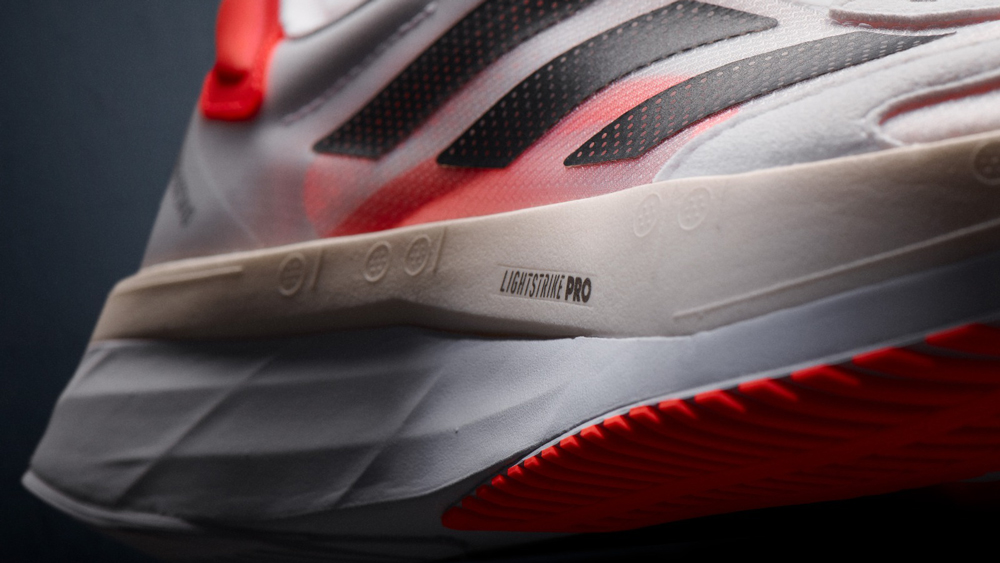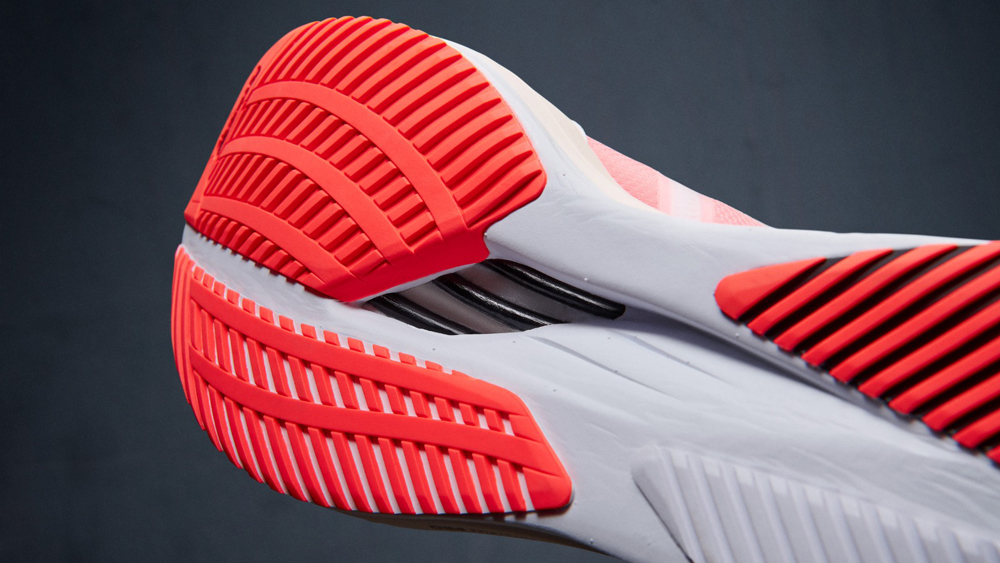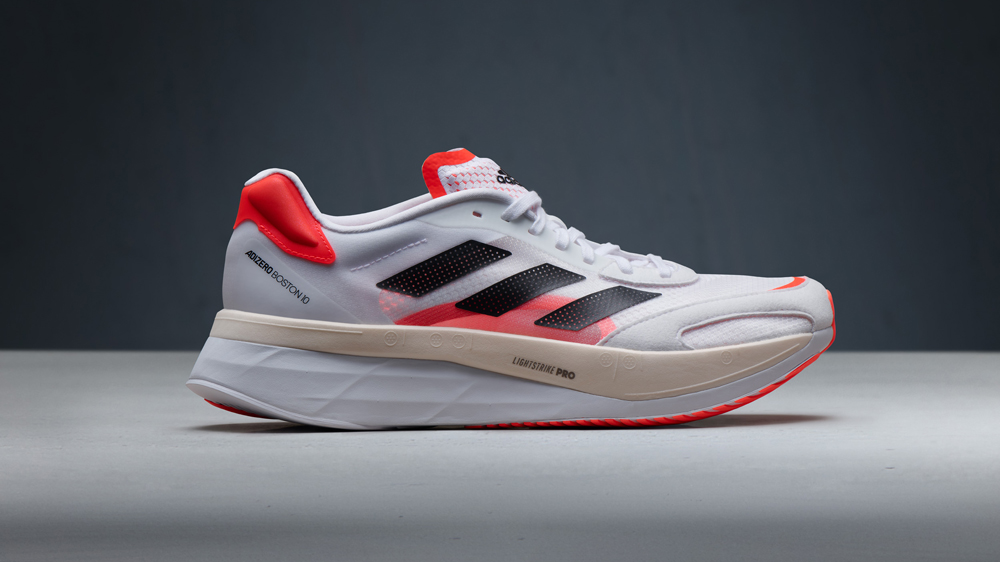Our Verdict
The Boston 10 is a big change from past Bostons – it’s heavier and less suitable for fast running – but it’s still a stable and reasonably versatile daily trainer.
For
- Stable ride
- Versatile option for training runs
- Outsole offers excellent grip
Against
- The ride is a little dull and firm
- Much heavier and bigger than past Bostons
- Not a great racing option
You can trust Coach
For a long time Adidas opted to keep the updates to the Boston fairly minimal. And for good reason, because it was a popular, fairly simple shoe that a lot of runners loved to wear for both training and racing.
However, in recent years the technology in running shoes has advanced at a breakneck pace, and the Boston fell behind carbon plate super-shoes for racing and daily trainers that incorporated the springy foams and plates from those super-shoes.
In response, Adidas has made sweeping changes to the Boston 10 that incorporate tech from its own carbon plate racer, the Adizero Adios Pro. The new Boston has a huge stack that rises to 39.5mm at the heel, close to the 40mm limit set by World Athletics, and it has both a carbon plate and Adidas’s EnergyRods.
The carbon plate is a small one just placed under the heel to promote stability, while the EnergyRods, in the midsole, are not quite the same as the ones used in the Adios Pro. Those are carbon-infused, while the Boston’s rods appear to be plastic. Whatever the material, the rods are meant to create a stiffer, more propulsive ride.

Adidas has used two different foams in the midsole of the Boston 10. The top layer is Lightstrike Pro, the lightweight, bouncy foam used in the Adios Pro. Underneath that is a layer of Lightstrike EVA, a more traditional foam which creates more stability and increases the durability of the Boston, which is designed to be more of an everyday trainer than a racer.
The outsole of the shoe is mostly covered by a layer of Continental rubber, which is durable and grips well on wet roads. There is some exposed foam in the midsole, while a chunk has been taken out to give you a glimpse of the EnergyRods and reduce the weight.

The Boston 10 is heftier than its predecessors, which usually weighed in around 240-250g in a UK 9. In contrast, the Boston 10 is 296g, and isn’t hard to see where that extra weight has come from given the sizeable stack of cushioning. The Boston 9’s stack rose to just 26mm at the heel, compared with 39.5mm on the 10.
I’ve been a big fan of the Boston and used it for a lot of training and racing before the super-shoe era dawned. After running 110km in the Boston 10, ranging from short and sharp track intervals right up to a 20-miler (32.2km), I can’t say that the changes made by Adidas are an unqualified success.
I was particularly unimpressed with the Boston 10 during my first couple of runs in it. The ride was pretty joyless and firmer than most daily trainers. However, the shoe did break in and from around the 50km mark I enjoyed using it a lot more. It just about had the speed to rattle through track work, and the cushioning protects the legs when you tackle long runs in it – I’ve done a half marathon and that 20-mile run in the shoe, and I felt pretty good the following day on both occasions.
Despite having a layer of Lightstrike Pro foam underfoot, the ride is not as soft and springy as you’ll get on the Adios Pro. It’s pretty firm, and surprisingly stable given the big stack of cushioning. The Boston 10 has all the ingredients of a modern shoe, but actually its ride is fairly traditional, though the large size does make it a little more cumbersome than previous Bostons, which felt more nimble on the foot.
It’s still fairly versatile, though I don’t think it would be a shoe I’d pick regularly for tempo runs or track work, whereas past Bostons did that job brilliantly and I would happily race in them too. The Boston 10 is at its best when cruising along at easy or steady paces, when I didn’t really feel the weight of the shoe – aside from during one run when it bucketed down and the thick upper seemed to absorb a lot of water. While I didn’t get much pop from the EnergyRods, and there’s no rocker in the midsole, it still has a fairly smooth ride and it is a good shoe to log a lot of your base training in.
- How To Choose Running Shoes
- The Best Running Shoes
- The Best Adidas Running Shoes For Every Type Of Runner
For all the changes made to the Boston 10, it still has the same problem its predecessors had, which is that it’s not as impressive as several other daily trainers that have made better use of the available tech. The Saucony Endorphin Speed 2 has a nylon plate and Saucony’s impressive PWRRUN PB foam in the midsole, and produces a much faster, more enjoyable ride, while also being lighter than the Boston 10.
At £155 the Endorphin Speed 2 costs £25 more than the Boston 10, but there are other shoes that come in cheaper than the Adidas and offer more. The Hoka One One Mach 4 has a more comfortable, smoother ride that I enjoyed for both fast and slow running. Having also logged a 20-mile run in the Mach 4, there’s no doubt that I prefer it to the Boston 10 for those long runs, and it’s also lighter and faster for tempo runs or sessions.
Another great option is the New Balance FuelCell Rebel v2, which really shows off what you can achieve with today’s foams. It has a high stack of soft FuelCell cushioning, yet weighs just over 200g in my UK 9, and is a great shoe to use for everything from speedwork to recovery runs.
The Adidas Adizero Boston 10 is not a bad shoe, and runners seeking a firmer daily trainer would do well to check it out. However, I’m not convinced the changes made have produced a much better shoe than past Bostons, and it still struggles to compete with the best all-round running shoes on the market.

Nick Harris-Fry is a journalist who has been covering health and fitness since 2015. Nick is an avid runner, covering 70-110km a week, which gives him ample opportunity to test a wide range of running shoes and running gear. He is also the chief tester for fitness trackers and running watches, treadmills and exercise bikes, and workout headphones.

